Published
on 31
Aug 2018
|
All rights reserved.
|
|
|
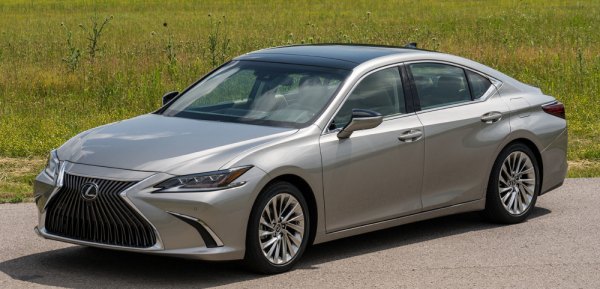
|
|
The
ES was never regarded as a true Lexus. Can this car's sharp look change
its fate?
|
|
The
ES nameplate has been serving for nearly 30 years. However, it was
never regarded as a true Lexus. While most other Lexus, even the
smaller IS, ride on dedicated rear-drive platforms, the ES has been a
repackaged Toyota Camry from Day 1. It employs the same engines,
suspensions and therefore shares the same unexciting driving manner.
Built at the same assembly plant in Kentucky, USA, as the Camry, it is
seen as a way to capitalize the existing resources to make an
affordable Lexus. No wonder it is compared to Buick and Acura instead
of the top-tier German executive cars.
To me, the biggest problem of ES is not the lack of driver appeal. In
fact, there are plenty of people want comfort in the first place, and
Volvo proves that you don’t need a sporty character to be desirable.
What troubled the ES for the large part of its history is the lack of a
classy packaging. Its styling was rarely attractive and elegant. Its
build quality and materials were only half a nod better than Camry,
which is not enough to lure buyers from premium brands. Lexus knows
this, too, so it targeted the ES at a lower price base, sitting under
its true E-segment flagship, the GS.
However, changes started happening in the last generation. For the
first time, it rode on a chassis whose wheelbase was longer than its
Toyota-badged sister. Its exterior styling was massively improved,
finally stylish enough to catch my attention on street, something I had
never experienced. Its interior was made classy enough to stand proud
beside any Lexus, or any German premium cars. Maybe it is time to
rethink its market positioning…
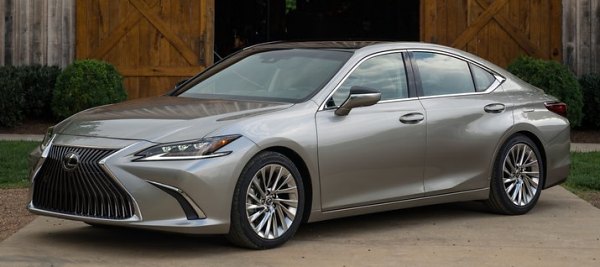
|
|
We
couldn't believe that the once super-conservative Lesus is now the
leader of bold design...
|
|
Yes, Lexus did think about it. In fact, the ES has always been selling
pretty well, usually in the scale of 100,000 cars a year. That’s far
more than the 30,000 or so global sales of the GS. Rumors said Toyota
has decided to terminate the GS line, and its position is to be taken
by the ES. No wonder the new ES will be sold in Europe for the first
time. Now available to North America, Europe, China and Japan, it is
finally a world car. As before, production takes place at both the USA
and Japan – the former concentrates on V6 model and the latter focuses
on hybrid.
Compared to the already nice looking last gen, the 7th generation ES is
more stylish again. Here is a low-slung, very long, wide and sleek
design. I don't want to use "4-door coupe" to describe it (because this
term is increasingly misused), but it should bring back the fond memory
of American car lovers, reminding them American car makers were once
bold and imaginative enough to design something like Dodge Intrepid or Pontiac Grand Prix.
They just couldn’t believe the once super-conservative Lexus is now the
leader of bold design. Take the massive, shaver-head-style “Spindle
grille” for example, I don’t know anybody else in the industry is brave
enough to sign off such a design to production. When Lexus first
introduced the Spindle grille to the IS 5 years ago, it split opinions
more so than the single-frame grille of Audi. Both grilles have evolved
since then, but today we finally like Lexus’, and we hate Audi’s even
more.
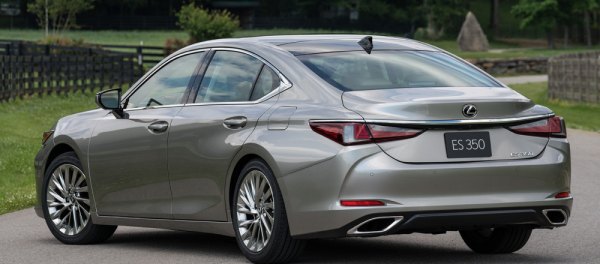
|
|
Super-sleek
design compromises a little rear headroom.
|
|
The new car is built on the TNGA-K (Toyota New Global Architecture -
Compact) platform of Camry and Avalon, but is called GA-K instead by
Lexus, understandably. Like its sister cars, it is driven by the front
wheels, whereas AWD is not even available. It also rides on MacPherson
struts up front and multi-link rear axle, which is sometimes referred
to double-wishbone by Toyota. To deliver superior ride comfort, it
introduces a new kind of passive dampers called “Dynamic Control
Shocks”, which is supplied by Australian company KYB. It features an
additional swing valve to better control oil flow, but sadly, I cannot
find technical explanation. F-Sport model is fitted with AVS adaptive
dampers and 19-inch low profile tires.
The ES runs a 2870mm wheelbase, identical to Avalon, 45mm longer than
Camry and 50mm longer than its predecessor. Outside, it gets 65mm
longer and 45mm wider than before, though marginally lower. The larger
footprint allows it to take the vacancy left by GS. The monocoque
chassis uses more high-strength steel in key locations, as well as more
structural adhesives and laser screw weldings. Nevertheless, rigidity
is lifted by only 6 percent. Aluminum bonnet, front fenders and front
bumper crash beam should save weight, but taking the larger dimensions,
more equipment and sound deadening materials (which covers the entire
floor) into the equation, the whole car gains about 35kg. Considering
its streamline shape, its drag coefficient is a little disappointing at
0.29, but the F-Sport model with extra rear spoiler is very competitive
at 0.26.
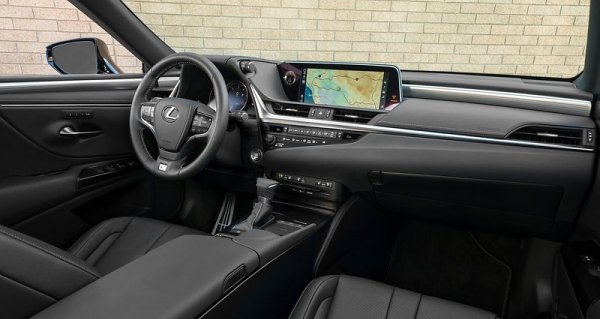
|
|
Build
quality is high. Materials are rich.
|
|
Inside, the cabin design may not be ground-breaking, but its
reconfigurable TFT instrument, which normally shows an LFA-inspired big
rev counter, with supplementary digital readings, is certainly special.
On the downside, the featureless center console seems to be a waste of
opportunity. Build quality, however, is high. There are real alloy
accents, shift paddles and door handles, stitched leather upholstery on
the dash top, door panels and on the comfortable seats. Where plastics
are exposed, they are soft-touch. The optional 12.3-inch infotainment
screen is clear and graphics appealing, but the touchpad used to
control it, located on the transmission tunnel, remains to be
unfriendly to use. As for space, the rear seats offer vast of legroom
thanks to the long wheelbase, but headroom is a little tight by the
class norm, blame to the fast-angle roof line. This is not a shock
though, as the new LS also suffers from the same compromise.
Although there will be lower power engines for other markets, in North
America the ES is available with only 2 engines, and both of them come
from Camry/Avalon. ES350 employs the new 3.5-liter V6 with D4-S port
and direct injection system. It is good for 302 horsepower and 0-60 mph
in a claimed 6.6 seconds. While the latter quote is obviously
conservative, it is equally obvious that the ES350 will be
significantly slower than its European rivals with turbocharged
six-cylinder engines, since its 267 lbft of peak torque is much lower
and comes much later than turbocharged torque. Toyota’s 8-speed
automatic transmission doesn’t help either, as it makes gearshift
leisurely at any modes. However, when it comes to smoothness and
refinement, this powertrain combo is rated high. In fact, with very low
wind and road noise as well, few in the class could match its overall
refinement, which is still the key strength of Lexus.
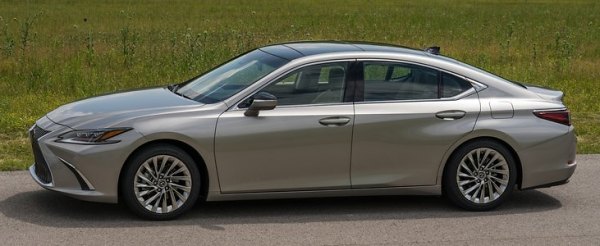
|
|
Dynamically,
F-Sport is much improved, yet still no comparison to the best European
rivals.
|
|
Yet the hybrid model, ES300h, could beat the ES350 for quietness. The
powertrain is basically the same as that of its sister cars, which
comprises of a 2.5-liter Atkinson-cycle four-cylinder, 2 electric
motors and a planetary CVT contained in a compact package, and a NiMH
battery stored under the rear seat (which does not rob any luggage
space). Here, the working relationship between the engine and motors
has been adjusted to deliver a bit more power, but at 215hp combined,
it is modest at best for a 1.7-ton car. It will take a relaxing 8.1
seconds to go from 0-60, but it will return truly outstanding fuel
economy – yes, its EPA rating of 44mpg combined is unheard for its
class. However, this model rewards those driving with a peace of mind.
If you are in a hurry, the rubberband effect of its CVT will spoil the
refinement a little, even though the hybrid model has extra sound
deadening materials at the firewall.
What about the chassis? Unquestionably, the regular ES is very
comfort-oriented. Its suspension rides smoothly. Its steering is light
and vague. There’s a lot of body motions in corners or during braking.
Not much fun to have for hustling it. That’s okay. If you choose the
F-Sport model, its stiffer suspension setting, adaptive dampers and
sportier tires make a difference, finally have a taste of sport. The
chassis is better tied down. The steering is heavier and a bit more
feelsome. However, it makes no comparison with a European rear-drive
sedan like BMW 5er, Mercedes E-class or Jaguar XF. These cars have
tighter body control, better balance and their drivers feel more
connected, not to mention ample power and quicker response through
gears. The ES350 F-Sport might have done all it can to narrow the gap,
but it is still some way off at the dynamic side, something unlikely to
be changed unless it switches to a rear-drive platform. But if Lexus
does that, why not simply keep the GS alive? In the end, Lexus doesn’t
want to compete with its European rivals head to head. The ES is
deliberately more affordable and more comfort-oriented. That leaves it
in a comfort zone.
|
Verdict:    |
|